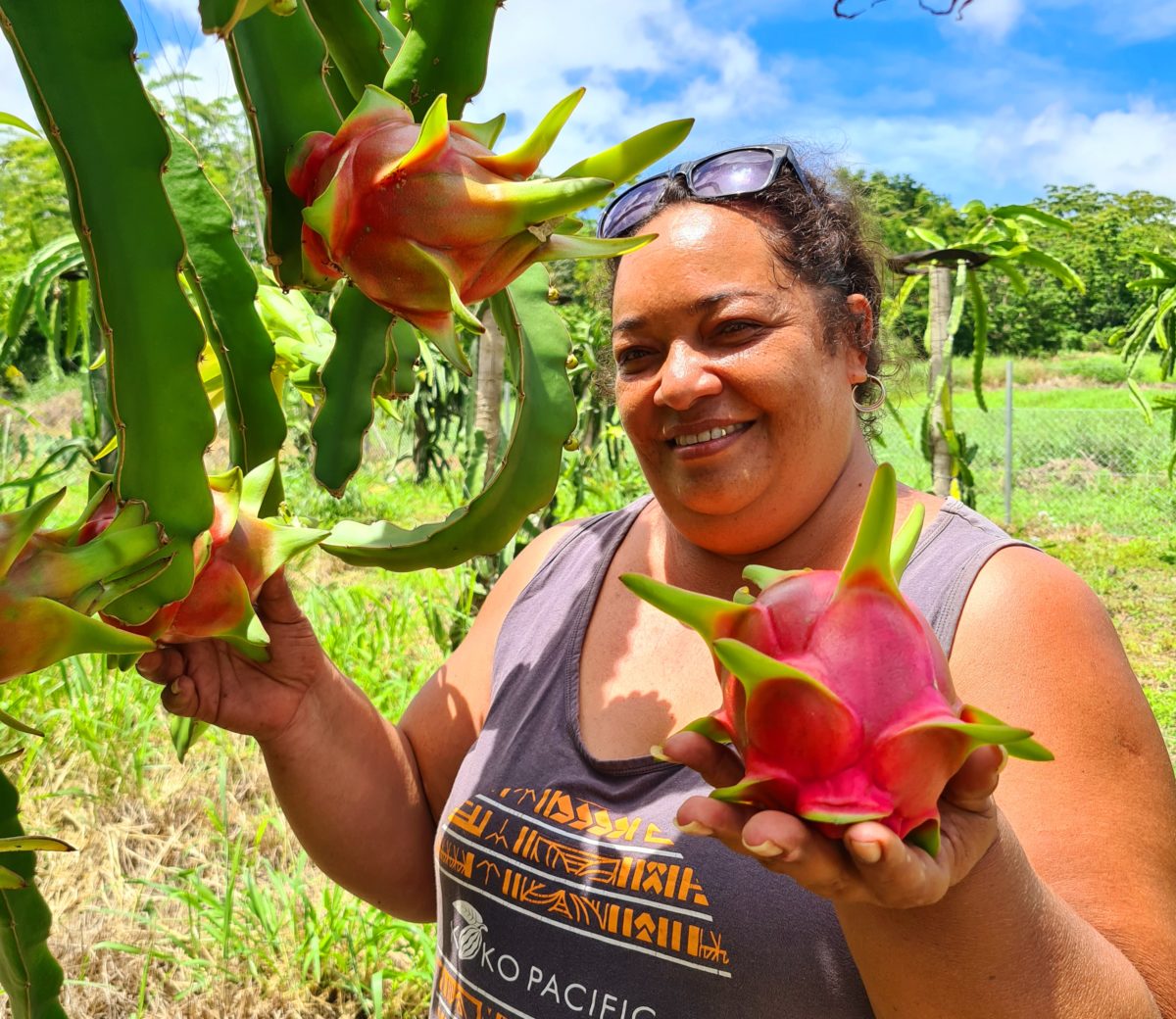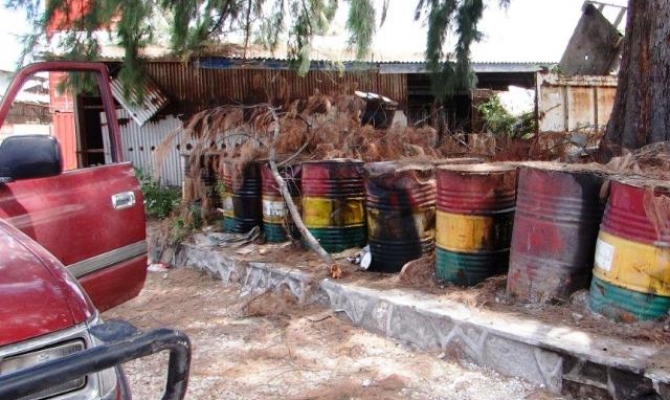Samoan farmer successfully grows 100 Dragon Fruit plants in Aleisa that are fruiting and providing profit to her farm.
Local farmer, Dora Tamapeau Ioane is one of few growers of the exotic Dragon Fruit in Aleisa, Samoa. She and her late husband John started growing dragon fruit two years ago after they acquired cuttings from another local farmer in Alafua and now she has 100 plants successfully growing and fruiting every year at their farm.
Not much is known on island about this temperamental cactus fruit that originates from Central and South America where it is commonly referred to as pitaya, pitahaya or strawberry pear.
However once or twice year these enticing and delicious fruits appear in local supermarkets commanding the kind of recognition that other familiar or bland fruits can only dream of.
Its bright pink skin stands out from the usual sea of green and yellow fruits and vegetables on display. With varying hues of pink and yellow flesh, the dragon fruit has been described as having the texture of a kiwi fruit and watermelon with mildly sweet and subtle earthly notes like a pear. The fruit with the deeper pink flesh are said to have the most flavour.
The dragon fruit plant can begin flowering in as little as six to eight months and many also enjoy the experience of catching a glimpse of the rare nocturnal flowers that only bloom at night which have many growers around the world referring to them as “moonflowers.”
The good news is that once the plant is mature, you could see four to six fruiting cycles a year from a plant that is capable of bearing fruit for 20 to 30 years. With the cost of one fruit ranging from $10 to $20 tala (US$3.83 – $7.65) each– it’s a profitable enterprise to undertake in Samoa.
Although it is a cactus, it requires a relatively high amount of water. Dragon fruit trees are heavy and vining so they need something to climb (sometimes reaching 7.5 metres) and once that’s in place, it’s a relatively easy-going plant. Cuttings will grow rapidly and may produce fruit 6-9 months from propagation.
“I was surprised at how easy it was to grow them,” said Dora “Dragon fruit plants can grow on most land here in Samoa provided that it’s not too wet because they love the sun. You just need to keep the area clean and water them twice a week; sometimes I add cow waste for fertiliser. Last year I harvested about 200 hundred fruits and supplied Frankies Supermarket.”
Cuttings are available after fruiting and because of limited supply; a single cutting will set you back $15 and $20 tala (US$5.74 – $7.65). It also appears that the dragon fruit is not only good looking but also a healthy food item in your diet. According to one study Dragon Fruit is high in prebiotic fibre and antioxidants which is beneficial to your gut health. Both red and white varieties have been shown to reduce insulin resistance and fatty liver in obese mice.
“People should definitely give the dragon fruit planting a go not just for profit but also because they are so delicious and nutritious. I am looking to extend my orchard with another 50 plants within the year” says Dora “At the moment they are fruiting so we have to wait until the season finishes before I can take cuttings”
Below is a guide to growing the dragon fruit plant from the Crops Division at the Ministry of Agriculture and Fisheries Samoa:
Dragon fruit needs sun to produce fruit so plant it in a full sun spot or a place that gets at least 6 hours of sunlight a day. It is a cactus plant
How long does it takes for a dragon fruit to fully grow?
Plants can begin flowering in as little as six to eight months, The good news is that once the plant is mature, you could see four to six fruiting cycles a year from a plant that is capable of bearing fruit for 20 to 30 years.
How long does it take for a cutting to produce fruit?
Leave the treated stem segment to dry for 7-8 days in a dry, shaded area. After that time, dip the cutting into a root hormone if any or plant directly in the garden or in a well-draining soil Cuttings will grow rapidly and may produce fruit 6-9 months from propagation.
How big does a dragon fruit get?
Although it is a cactus, it requires a relatively high amount of water. Dragon fruit trees are vining, and need something to climb. They are also heavy – a mature plant can reach 7.5 m
Does dragon fruit grow easily?
Dragon fruit is easy to grow in the garden. It’s a climbing cactus, so it requires a frame or trellis for it to grow up and trail over, but once that is in place, it’s relatively easy-going
Spacing for dragon fruit
Many different varieties of spacing systems are used while growing dragon fruit based on the slope and size of the plantation area. The type of trellising is also one of the factors on which plant spacing is dependent. Spacing recommendations are:
Row spacing -3 m,
Plant spacing -3 m
Trellis Height – Would recommend a maximum trellis height of 6 feet above the ground, as dragon fruit typically grow at least a foot higher than their trellis, making it hard to reach for most people. Further, tall trellises can be more susceptible to wind damage, and can more easily become lopsided due to leverage.
Type of soil for growing Dragon fruit
- Dragon Fruit can be grown on almost any soils however Sandy soils that have good irrigation are generally preferred.
- The ph of the soil should be between 5.5 to 6.5 for a good crop.
- Beds should be at least 40-50 cm high.
- The best soil for dragon fruit is one that is well-draining and rich in nutrients, ideally with a good amount of loamy sand, and organic matter for some water and nutrient retention.
Pruning
- Dragon fruit plants can get quite large; some varieties can even reach upwards of 20 feet (6.1 m).
- When it gets too large, then start pruning it by cutting off some branches.
- Less weight may actually get it stronger, concentrate the nutrients, and encourage it to flower.
This story was produced by Fine Mat Creative, published at Samoa Country Magazine on 08 December 2021.




